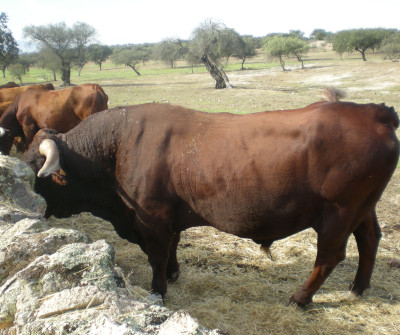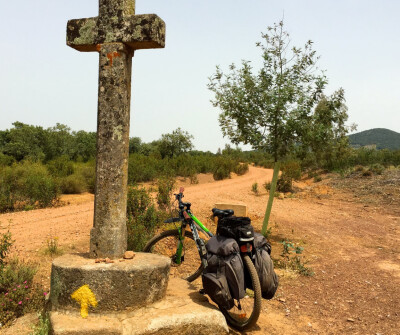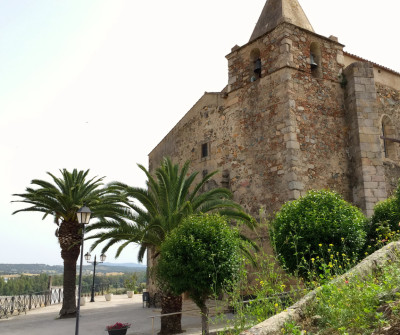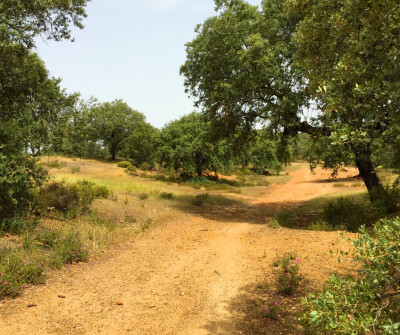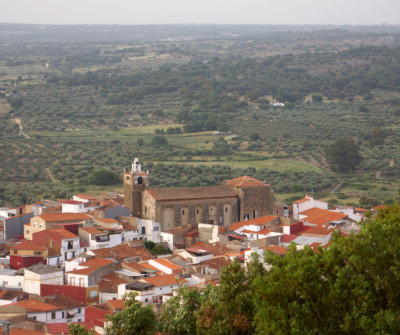You exit Mérida close to the Roman aqueduct of Los Milagros until you reach the road to Proserpina. This dam was built by Emperor Augustus to supply water to Mérida through the above-mentioned aqueduct. This is a remarkable site and a real landmark for the period, almost half a kilometre long.
READ MOREYou have to take the path around the pond and continue for some 3 kilometres to a discreet detour; please pay attention or you may miss it. The diversion leads to the village of El Carrascalejo through gravel roads and quiet landscapes. The place is ideal for a rest and to visit the church of La Consolación.
From there you continue to the next village, Aljucén, of Moorish origin and of the same name as the river that crosses these lands. Once you have crossed the river, the walk continues along the Parque Natural de Cornalvo, a natural park on the border with the province of Cáceres.
After the Cruz de San Juan, you can already see Alcuéscar, with its Gothic church of La Asunción. Its most important monument is outside the Camino, 3 kilometres away from the village: the basilica of Santa Lucía del Trampal erected in the 7th century.
Tips from our postmen and women
What to do and see in Alcuescar?
“In Alcuéscar, you should take a look at the basilica of Santa Lucía, popularly known as “La Basílica Visigoda”. You can access the surroundings for free and you can go on a guided tour of the inside on an organised visit that you can book at the Visitor’s Centre (Centro de Interpretación), a few metres away, where the history of the building is explained".
What to do and see in Arroyomolinos de Montanche
“If you are not very tired, in Arroyomolinos de Montanchez you can check the beautiful route of Moorish mills. You can also visit the “castañar”, where on 28th October we celebrate “La Sorpresa de Arroyomolinos”, a detailed recreation of the battle of 1811 between Napoleon’s troops and the British, Spanish and Portuguese allies”.


 Filter
Filter